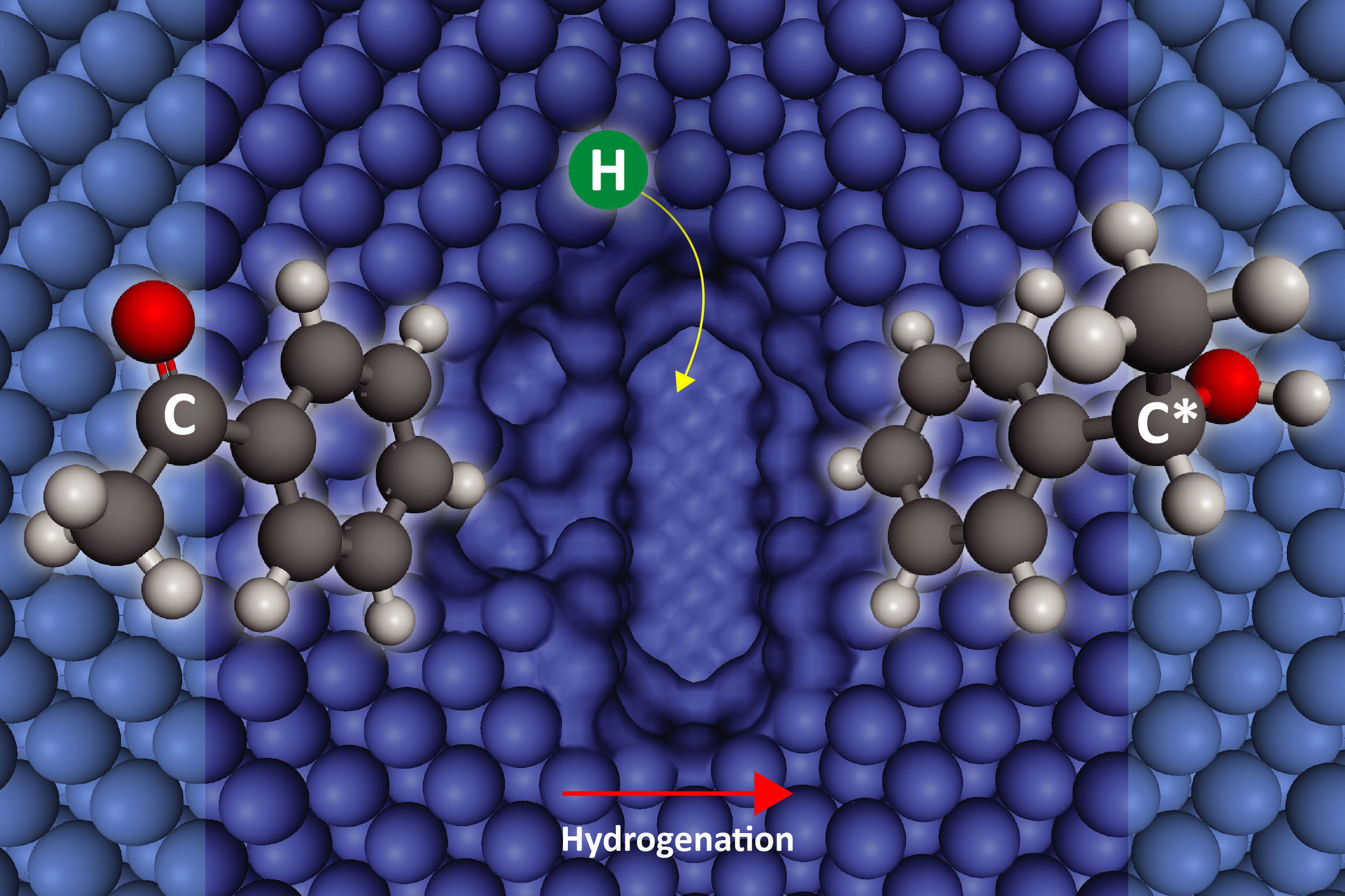
Enantioselective analysis, synthesis, and separation are of crucial importance for many potential applications, ranging from sensing to catalysis. We have successfully elaborated chiral imprinted mesoporous metals such as platinum, irridium, and nickel obtained by the electrochemical reduction of metal salts in the simultaneous presence of a liquid crystal phase of nonionic surfactants and various chiral template molecules, such as enantiomers of 3,4-dihydroxyphenylalanine (DOPA), mandelic acid, phenylethanol, epinephrine, and so on. The chiral-encoded mesoporous metals are capable of enantioselective recognition of a chiral compound, expressed by a very significant discrimination between two enantiomers. Most importantly, such nanostructured metals are also able to break the symmetry during the electrosynthesis of chiral molecules such as mandelic acid, phenylethanol, epinephrine, and so on. By fine-tuning the experimental parameters, a very high enantioselectivity (>90% enantiomeric excess) with good catalyst stability can be achieved. Apart from asymmetric synthesis, chiral separation can also be achieved using such imprinted mesoporous platinum as a stationary phase in a microfluidic channel. It is possible to fine-tune the electrostatic interactions between the encoded surfaces and the corresponding chiral molecules by applying an electric field, allowing the complete separation of chiral compounds. Therefore, these novel materials open up promising perspectives in various fields, ranging from electrosynthesis to chiral separation technologies.
Apart from enantioselective processes, we have developed a dual-functional electrochemical system that simultaneously addresses biomass conversion and CO₂ utilization. Specifically, we demonstrate the production of 2,5-furandicarboxylic acid (FDCA), a renewable alternative to terephthalic acid for polyester manufacturing through the electrooxidation of hydroxymethylfurfural (HMF), paired with the electroreduction of carbon dioxide (CO₂) to carbon monoxide (CO). Our system employs a single, efficient catalyst composed of iron-nickel (FeNi) nanoparticles supported on CO₂-derived multi-walled carbon nanotubes (CNTs), deposited on nickel foam (NF). This bifunctional catalyst serves both anodic and cathodic reactions within a combined electrochemical cell. The FeNiCNTs/NF catalyst demonstrated outstanding performance, achieving faradaic efficiencies of 99.60% for FDCA and 96.25% for CO. Most importantly, this work introduces a scalable and energy-efficient approach, offering substantial potential for future industrial biorefinery and carbon utilization systems.
References:
- Wattanakit, C.; Kuhn, A. book chaper in the title of Chiral Metal Electrodes for Enantioselective Analysis, Synthesis, and Separation was published by Sustainable and Functional Redox Chemistry
https://doi.org/10.1039/9781839164828-00274 - Butcha, S.; Yu, J.; Pasom, Z.; Goudeau, B.; Wattanakit, C*.; Sojic, N*.; Kuhn, A*.
Electrochemiluminescent enantioselective detection with chiral-imprinted mesoporous metal surfaces
Chem. Commun., 2022, https://doi.org/10.1039/D2CC02562K
